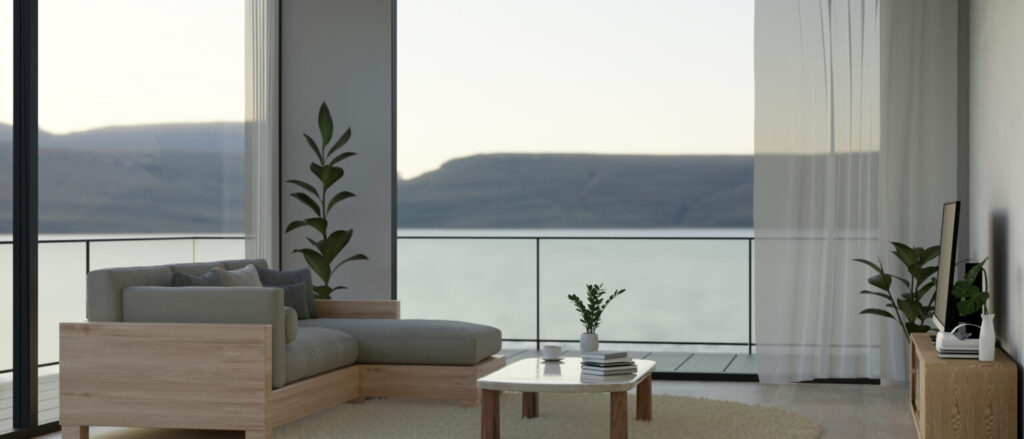
In today’s world, energy efficiency is not just a buzzword; it’s a crucial aspect of sustainable living and cost-saving. As energy costs continue to rise, homeowners and businesses alike are seeking ways to reduce their energy consumption and lower their bills. One of the most effective methods to achieve this is through the use of modern, energy-efficient glass solutions. This blog will explore the various types of energy-efficient glass, how they work, their benefits, and practical tips for installation and retrofitting.
Types of Energy-Efficient Glass
Low-E (Low Emissivity) Glass
Low-E glass is designed to minimize the amount of ultraviolet and infrared light that passes through the glass without compromising the amount of visible light that is transmitted. This type of glass has a microscopically thin coating that reflects heat, keeping it inside during the winter and outside during the summer. This helps to maintain a consistent indoor temperature, reducing the need for heating and cooling.
Double and Triple Glazing
Double and triple glazing refers to windows that have two or three layers of glass with a gap in between. These gaps are filled with air or inert gases like argon or krypton, which provide additional insulation. The more layers of glass and the better the insulation, the more effective the window is at preventing heat transfer, thus enhancing energy efficiency.
Insulated Glass Units (IGUs)
Insulated Glass Units (IGUs) are composed of two or more glass panes separated by a spacer and sealed together at the edge. The space between the panes is often filled with inert gas to improve insulation. IGUs are designed to reduce heat transfer and condensation, making them an excellent choice for improving energy efficiency in buildings.
How Energy-Efficient Glass Works
Reflecting Heat
Energy-efficient glass works by reflecting heat. Low-E coatings on the glass reflect infrared light, keeping heat inside during the winter and outside during the summer. This reflection helps to regulate the temperature within a building, reducing the reliance on heating and cooling systems.
Reducing Heat Transfer
The design of energy-efficient glass, particularly in double and triple glazing and IGUs, reduces heat transfer. The layers of glass and the insulating gas between them act as barriers to heat flow. This means less heat escapes from your home in the winter and less heat enters in the summer, contributing to a more energy-efficient environment.
Enhancing Natural Light
Energy-efficient glass is designed to maximize natural light while minimizing heat transfer. This allows for bright, well-lit spaces without the associated heat gain that can increase cooling costs in the summer. By optimizing the amount of natural light, energy-efficient glass can reduce the need for artificial lighting, further lowering energy consumption.
Benefits of Energy-Efficient Glass
Lower Energy Bills
One of the most significant benefits of energy-efficient glass is the reduction in energy bills. By improving insulation and reducing the need for heating and cooling, homeowners and businesses can see substantial savings on their energy costs. The initial investment in energy-efficient windows often pays for itself over time through these savings.
Improved Indoor Comfort
Energy-efficient glass helps to maintain a consistent indoor temperature, providing a more comfortable living or working environment. In the winter, the glass keeps the heat inside, and in the summer, it keeps the heat out. This reduces drafts and cold spots near windows, creating a more pleasant atmosphere year-round.
Environmental Impact
Reducing energy consumption not only lowers bills but also decreases the overall carbon footprint of a building. By using less energy, homes and businesses contribute less to greenhouse gas emissions, promoting a more sustainable and environmentally friendly lifestyle.
Installation and Retrofitting
Professional Installation Tips
For the best results, it’s essential to have energy-efficient glass professionally installed. Professional installers ensure that windows are correctly fitted and sealed, preventing air leaks that can undermine the effectiveness of the glass. They also have the expertise to recommend the best types of glass for your specific needs and climate.
Retrofitting Existing Windows
If replacing all the windows in your home or building is not feasible, retrofitting existing windows with energy-efficient options is a practical alternative. This can include adding Low-E films, installing storm windows, or using retrofit double-glazing systems that add an additional pane to existing windows. These solutions can significantly improve energy efficiency without the need for complete window replacements.
Cost Considerations
While the upfront cost of energy-efficient glass can be higher than traditional options, the long-term savings on energy bills and the increased comfort and value of your home make it a worthwhile investment. Additionally, many governments and utilities offer rebates or incentives for installing energy-efficient windows, further offsetting the initial costs.
Case Studies and Real-Life Examples
Success Stories of Energy Savings
Numerous case studies highlight the substantial energy savings achieved by installing energy-efficient glass. For example, a family in a cold climate reported a 30% reduction in their heating bills after upgrading to double-glazed windows with Low-E coatings. Similarly, a commercial building in a hot climate saw a 25% decrease in cooling costs by retrofitting their windows with IGUs.
Comparative Analysis Before and After Installation
Comparative analyses before and after the installation of energy-efficient glass often show significant improvements in energy efficiency and indoor comfort. For instance, a study conducted on an office building revealed that after replacing single-pane windows with triple-glazed IGUs, the building’s energy consumption for heating and cooling was reduced by 40%.
Conclusion
Investing in modern, energy-efficient glass solutions offers numerous benefits, from lowering energy bills and improving indoor comfort to reducing environmental impact. By understanding the types of energy-efficient glass available and how they work, you can make informed decisions about upgrading your windows. Whether through professional installation or retrofitting existing windows, energy-efficient glass is a smart investment that pays off in the long run. Consider taking the step towards greater energy efficiency and enjoy the many advantages it brings to your home or business.
